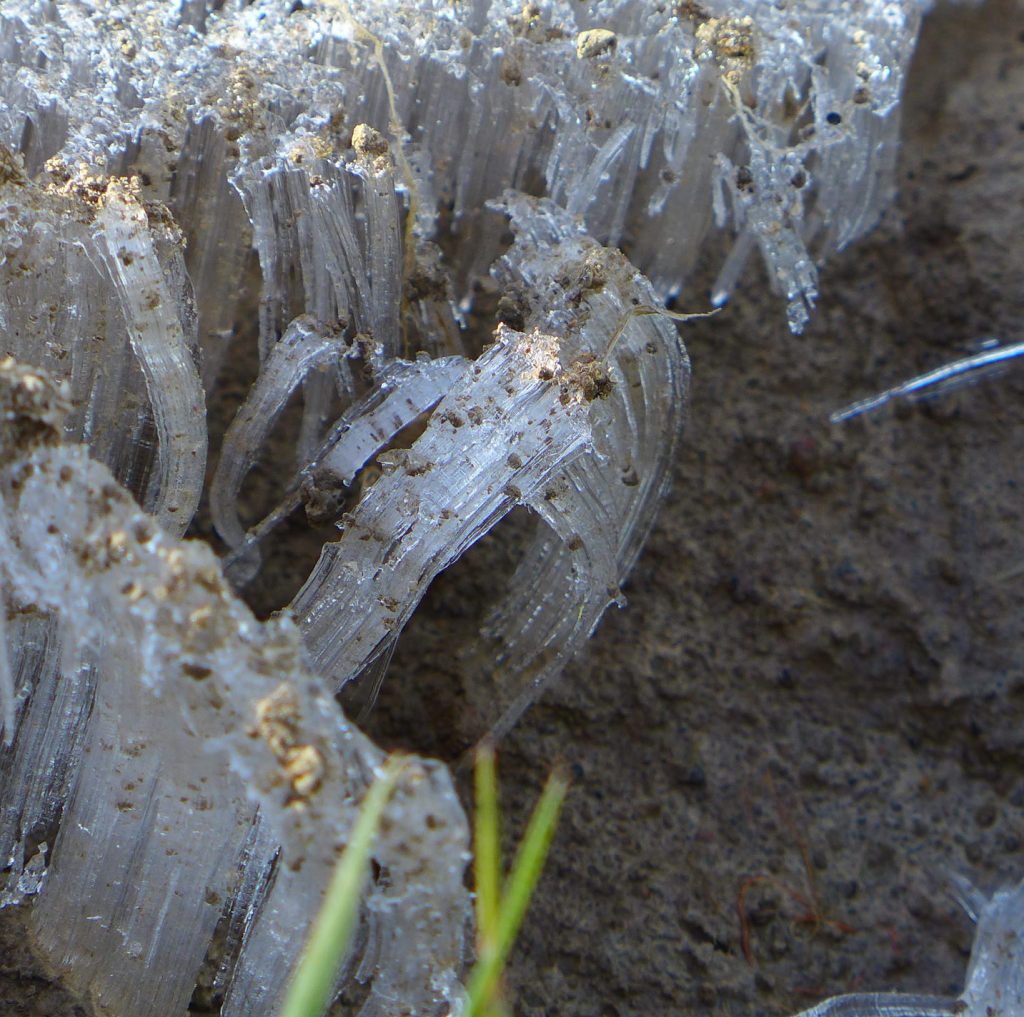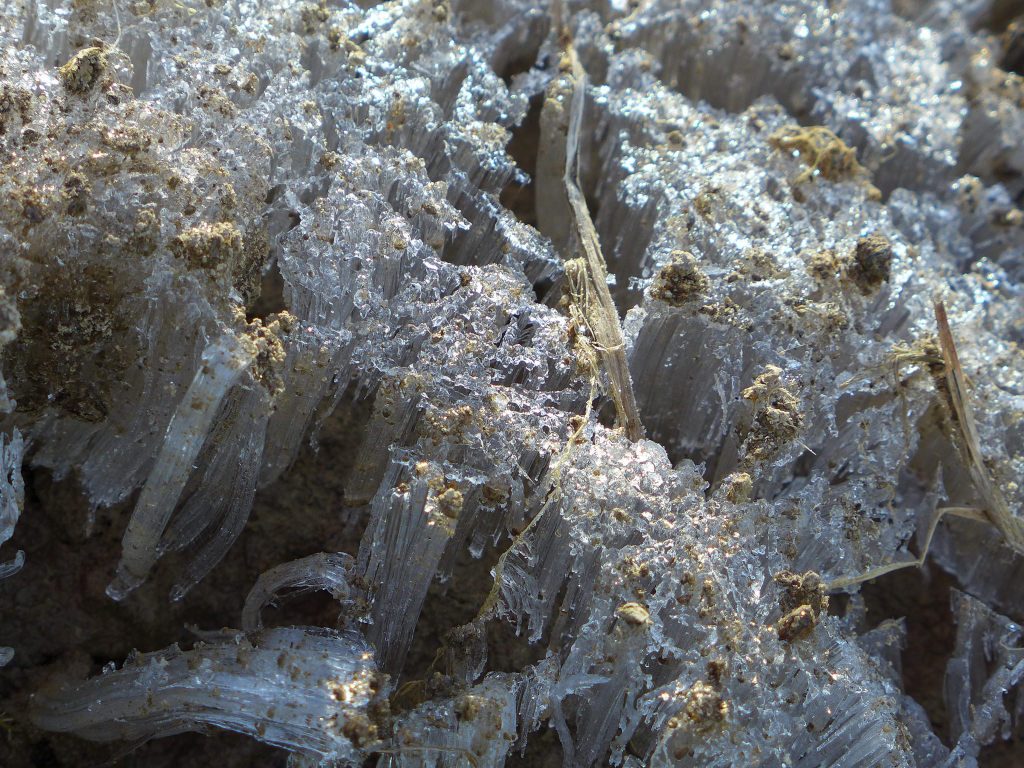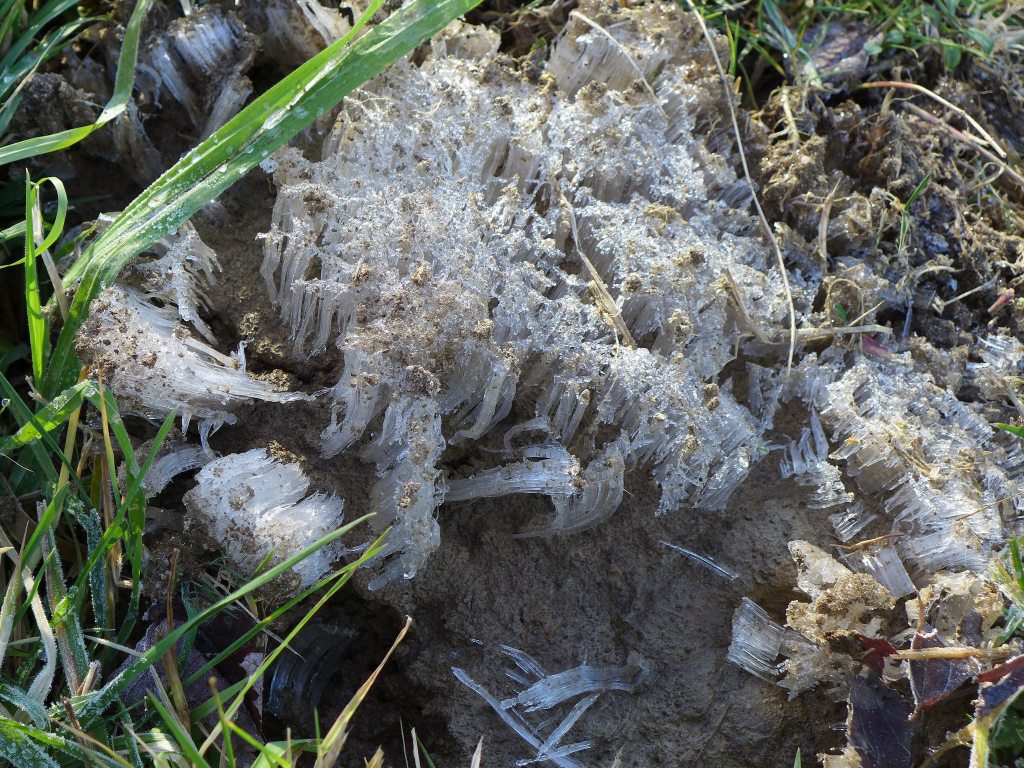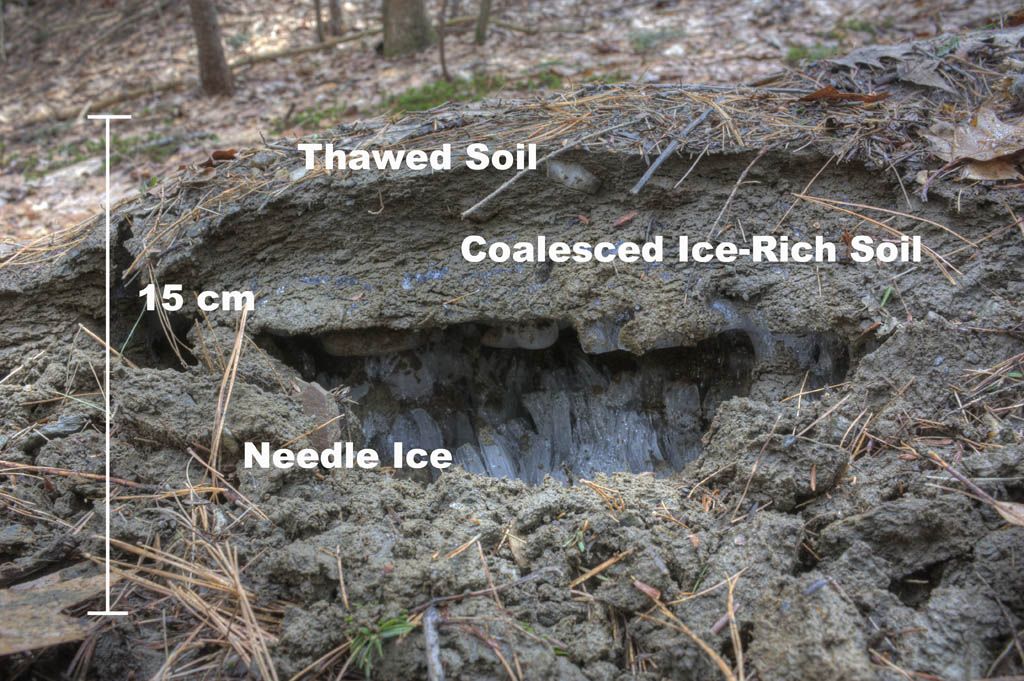
Tuesday 18 December 2018:
After 1.5 inches of rain fell over the weekend the ground here in Pittsburgh is super soggy. Meanwhile it’s been warm since last Thursday but the temperature dropped below freezing last night. These are perfect conditions for needle ice.
Needle ice forms when the soil is warm and the air is freezing. While ice is forming on top of the soil it draws up subsurface water by capillary action. The ice grows from the bottom creating a structure that looks like needles or even tiny barricades. Since there’s little or no soil on top of the ice, it stands up in the air.

From the top it doesn’t look interesting — basically a frozen lump — but seen from the side it’s very cool. In the patch shown below some ice needles keeled over so I captured both the top and sides in one shot.

When the soil itself freezes, needle ice can form underground and create a frost heave on the surface. I’ve never opened a frost heave but here’s what one looks like in a photo from Vermont.

As you watch your footing today, look for the delicate structures of needle ice.
(photos by Kate St. John and from Wikimedia Commons; click on the caption to see the original)